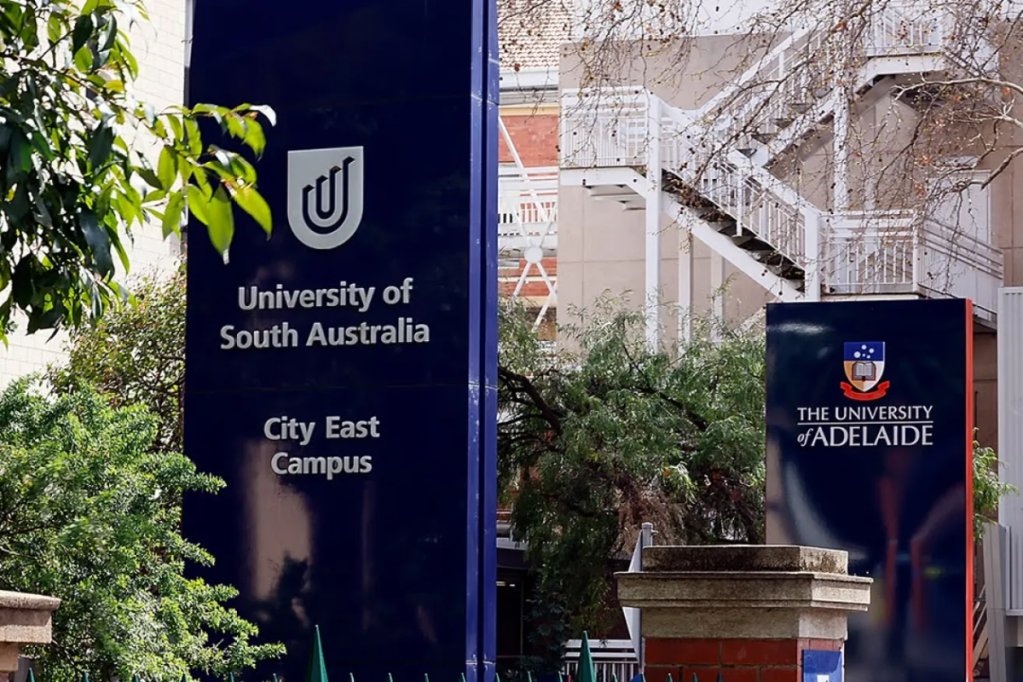Why I’m resigning as a University of Adelaide Adjunct Professor
A fierce critic of the University of Adelaide/UniSA merger, Geoff Hanmer explains why the move has persuaded him to move on.

Being made an Adjunct Professor of Architecture at the University of Adelaide was one of the best days of my life.
I could hardly believe that a lad from Christies Beach High School had become a professor at the same school of architecture he had graduated from in 1982.
In 2026, the merger of University of Adelaide and UniSA will mean that South Australia will join Tasmania in being the only state offering only one architecture course. I don’t want to have any part in reducing choice for SA architecture students, and nor do I believe that the merger is in the best interests of the State, so I have reluctantly decided to resign my Professorship.
In the rest of the world, universities tend to split up as they get bigger, a local example being Flinders University, which gained independence from UoA in 1966. In this century, the top-ranking LSE and Imperial College have seceded from the University of London, and the top ranked University of Paris-Saclay has been split out of the other institutions at the University of Paris.
Nearly all the top 100 universities in the world are smaller than either UniSA or UoA, and the idea that ‘scale’ is the only pathway to success flies in the face of the evidence.
Why the Premier believes the merger will be a plus is a mystery. UoA has always been and still is the Go8 university with the highest percentage of low SES students (including me). It has always been an outperformer in research, despite economic growth in SA being well below par since the late 1970s.
You might like
SA now accounts for just 5.5 percent of the Australian economy. The university merger will not fix that.
The government has claimed that it is “investing” $464.5 million in the merger, but this is misleading. What the government has done is this:
- Transferred $320 million of budget reserves to create two ‘funds’, the interest on which will fund research and provide support for regional and disadvantaged students. These ‘funds’ remain as part of the budget, so will not increase the deficit. The impact on government and the benefit to the new university is limited to the interest earned by the funds, which will amount to perhaps $15 million to $20 million per year. To put this in perspective, this is comparable to the yearly amount UoA receives in donations from benefactors, much of which is likely to evaporate when the UoA brand disappears.
- The government has committed $30 million over three years to attract international students. This is a long overdue initiative, but the expenditure compares very poorly to the programs other states which have been running for years. WA has funded the “Study Perth” program to attract international students since 1996, and in 2022, the WA Government announced an additional $41.2 million package to attract international students over four years. Of course, the Federal Government has put a massive spanner in the international student market.
- The government has bought the Magill campus of UniSA and part of The Levels campus for $114.5 million but will then be able to redevelop and re-sell both parcels. I estimate that the government may realise over $100 million on this deal, which will effectively mean that the government may realise a profit on the merger.
The estimated $550 million to $750 million cost of the initial phase of the merger will be met by running down the reserves of the two universities, with most of the money coming from UoA. According to the summary “business plan”, the $114.5 million payment for the Magill campus will be required to keep the new entity solvent.
Most of the cash in the initial phase will be spent on harmonising IT systems, for accounting, enrolments and awards, timetabling, HR, space management and learning management systems. None of this money will improve teaching or research.
Another significant expense will be staff redundancies. Although the joint VC’s have said that there will be no sackings until mid-2027, this does not apply to contract or casual staff, many of whom have already been let go. Nor will it apply if the financial performance of the new university does not meet expectations. Over the next few years, many hundreds of well-paid SA jobs will go.
Stay informed, daily

Once the initial phase of the merger is complete, there will still be years of upheaval and distraction as the seven operational campuses are merged into an entity that can deal with the space requirements of the new university. Many of the course cohorts will have twice the number of students, but neither university has venues large enough to teach them.
Although VCs Höj and Lloyd have ‘fixed’ the problem of lecture accommodation by announcing that lectures will be online, the university will still need to find suitable spaces to teach lab-based STEM courses, chemistry, biology, physics, engineering, nursing, physiotherapy, occupational therapy and anatomy.
Estimates vary, but the very much smaller merger of the University of Manchester with its sibling UMIST resulted in a campus development program costing over GBP £1 billion by 2015, or about AUD$3.5 billion in today’s dollars. There is no money for this in the merger budget. It may yet be necessary to build some larger general teaching facilities as it is uncertain if ‘a university with no lectures’ is going to resonate with prospective students.
Plenty of staff at UoA are contemplating their options, particularly high performing researchers. Most of these people could get a job at any university in the world, and probably will. While my loss will not make much difference, there are about 200 academics across both universities whose departure would be a catastrophe.
Merging a university that ranks 89 on the QS scale with another that ranks 366 and then delivering a Top 100 university with the cashflow hovering only $100 million from insolvency presents challenges that I think no VC, however brilliant, will be able to resolve. Höj and Lloyd’s confidence in the success of this merger is evident, but – largely unremarked to date – the UoA/UniSA merger is the biggest and most complex university merger in the world.
My best hope is that the merger will not be an immediate disaster. For this to happen, the State Government will need to step in with some real money, probably the best part of $1 billion over five years. Failing that, it would make sense to stop once the new IT systems are in place and run the two universities as a federation with a single administrative system, like the University of California or the University of London.
Otherwise, SA risks having another RMIT; a very large university that is ranked more than 150 places lower than UoA and which offers an “overall student experience” rank 4 percent below the national average and at least 5 percent below UoA or UniSA.
Geoff Hanmer was Adjunct Professor of Architecture at the University of Adelaide, a position he now holds at the University of Technology Sydney.








